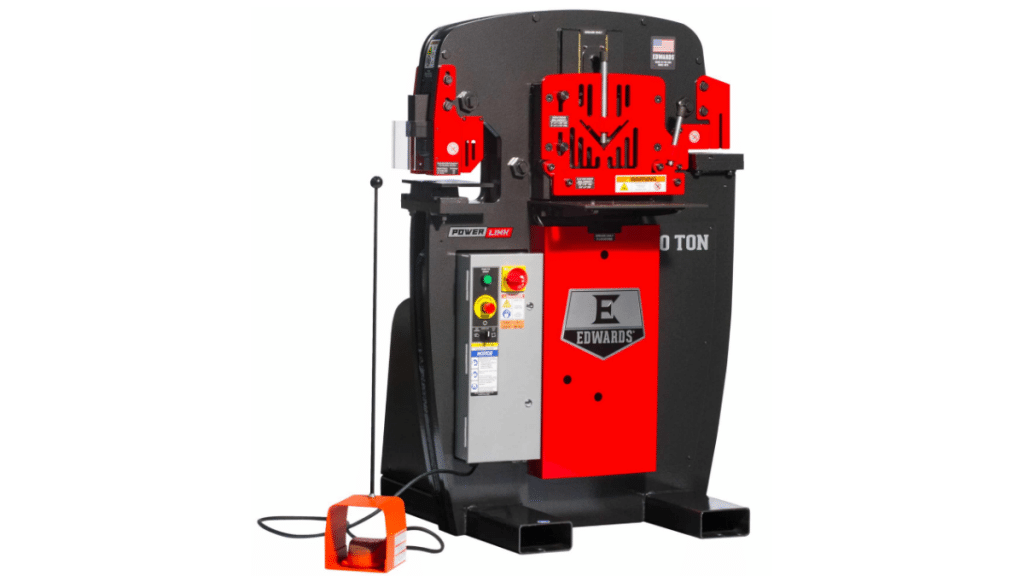Designing a metal fabrication shop that maximizes both efficiency and safety is crucial for maintaining a productive and safe work environment. With the right layout, tools, and safety features, a shop can streamline operations while safeguarding workers from potential hazards. In this article, we will cover key considerations for setting up a metal fabrication shop, focusing on the importance of tool selection, noise management, ergonomics, and safety.
Key Considerations for Designing Your Metal Fabrication Shop
When designing a metal fabrication shop, the first step is understanding your space requirements. Every shop has its own needs based on the types of work and volume of production. It’s essential to plan for adequate space for cutting, welding, assembly, and finishing stations. Zoning these workstations helps to minimize cross-traffic and ensures that tools and materials are easily accessible for each task.
A well-designed layout improves workflow and reduces unnecessary movement, helping workers stay productive throughout the day. Additionally, it’s essential to plan for safety by designing the shop with proper emergency exits, clear signage, and adequate lighting. By implementing these features, you can ensure that your workers are safe and that the shop is fully compliant with safety regulations.
Choosing the Right Tools for Your Fabrication Shop
The tools you select for your metal fabrication shop will directly affect the efficiency and success of your operations. Choosing the right tools ensures that work can be completed with precision and in a timely manner. Key tools for a metal fabrication shop include hydraulic and manual ironworkers, CNC machines, welders, grinders, and cutting equipment.
Hydraulic and manual ironworkers, for instance, are essential for bending, punching, and shearing metal, making them crucial pieces of equipment in any fabrication shop. These tools increase productivity and reduce physical strain on workers by automating and simplifying tasks that would otherwise be time-consuming and physically demanding.
In addition to selecting the right tools, it’s vital to establish a tool storage system. Proper tool organization and regular maintenance will not only help prolong the life of your equipment but also prevent unnecessary downtime due to equipment failure. Having a designated area for tool storage also promotes a cleaner, more organized workspace, leading to increased efficiency.
Managing Noise with Proper Silencers and Acoustic Design
Noise control is often overlooked in metal fabrication shops, but it plays an essential role in both worker health and safety. Excessive noise can lead to hearing loss, stress, and reduced focus. Proper silencers and acoustic design can significantly reduce the impact of noisy equipment and create a more comfortable work environment.
Site-specific acoustic enclosures are an effective way to reduce the noise levels generated by equipment like CNC machines, grinders, and welders. These enclosures are designed to fit the specific needs of your shop, ensuring that noise is contained while maintaining accessibility and airflow. Investing in high-quality silencers and acoustic treatments can prevent noise-related health issues and contribute to a quieter, more productive workspace.
Ergonomics and Workflow: Optimizing Shop Layout
Ergonomics is a crucial factor in reducing fatigue, increasing efficiency, and preventing workplace injuries. When designing your shop layout, consider the physical demands of each task and ensure that workstations are set up to minimize strain on workers. For example, placing tools and materials at the right height can prevent workers from bending over or reaching excessively.
Additionally, placing equipment in a logical flow from one task to the next minimizes unnecessary movement, allowing for a smoother workflow. This can lead to significant time savings, as workers can access tools and materials without constantly walking across the shop floor. An organized, ergonomic layout not only improves efficiency but also contributes to the overall safety and well-being of your workforce.
Implementing Safety Features in Your Fabrication Shop Design
Safety should be a top priority when designing any metal fabrication shop. Each station, such as cutting or welding areas, should be designed with protective barriers, guards, and proper signage to prevent accidents. Additionally, having proper lighting is essential to ensure that workers can clearly see their tasks and avoid mistakes that could lead to injuries.
Another critical safety feature is a robust ventilation system that ensures any harmful fumes or gases from welding, cutting, or grinding are properly exhausted from the shop. This not only helps improve the air quality but also complies with OSHA standards for workplace safety. Having a clean and well-ventilated shop is vital for maintaining both the health of your employees and the integrity of your equipment.
Conclusion
Designing a metal fabrication shop that balances efficiency with safety is key to the long-term success of your business. With careful planning, the right tools, noise management solutions, and ergonomic considerations, you can create a space that fosters productivity while protecting your workers. Prioritize safety by implementing effective safety measures and investing in the right equipment, such as hydraulic and manual ironworkers, and noise-reducing solutions like site-specific acoustic enclosures. By taking the time to design your shop thoughtfully, you’ll not only improve your bottom line but also ensure a safe and comfortable working environment for everyone involved.
